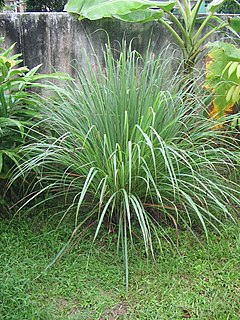
Cymbopogon, also known as lemongrass, barbed wire grass, silky heads, Cochin grass, Malabar grass, oily heads or fever grass, is a genus of Asian, African, Australian, and tropical island plants in the grass family. Some species are commonly cultivated as culinary and medicinal herbs because of their scent, resembling that of lemons . The name cymbopogon derives from the Greek words kymbe and pogon "which mean [that] in most species, the hairy spikelets project from boat-shaped spathes."
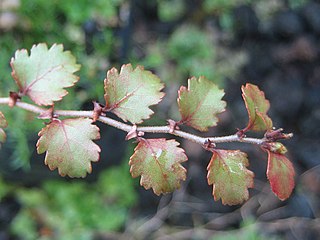
The Antarctic flora is a distinct community of vascular plants which evolved millions of years ago on the supercontinent of Gondwana. It is now found on several separate areas of the Southern Hemisphere, including southern South America, southernmost Africa, New Zealand, Australia and New Caledonia. Joseph Dalton Hooker was the first to notice similarities in the flora and speculated that Antarctica had served as either a source or a transitional point, and that land masses now separated might formerly have been adjacent.
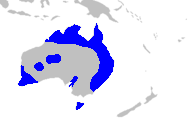
Xanthorrhoea is a genus of about 30 species of flowering plants endemic to Australia. Species are known by the name grass tree.
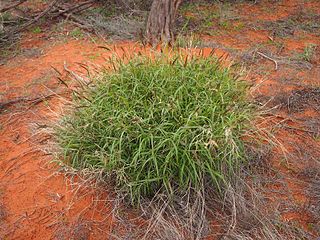
Cenchrus ciliaris is a species of grass native to most of Africa, southern Asia, southern Iran, and the extreme south of Europe (Sicily). Other names by which this grass is known include dhaman grass, anjan grass, koluk katai and buffelgrass.

The Barkly Tableland is a rolling plain of grassland in Australia. It runs from the eastern part of the Northern Territory into western Queensland. It is one of the five regions in the Northern Territory and covers 283,648 square kilometres (109,517 sq mi), 21% of the Northern Territory. The Barkly Tableland runs parallel to the southern shore of the Gulf of Carpentaria, from about Mount Isa, Queensland to near Daly Waters.

Andropogon is a widespread genus of plants in the grass family, native to much of Asia, Africa, and the Americas as well as southern Europe and various oceanic islands.

Lagurus is a genus of Old World plants in the grass family, native to the Mediterranean Basin and nearby regions, from Azores and the Canary Islands to Crimea and Saudi Arabia. It is also naturalized in Australia, New Zealand, Ireland and Great Britain, and scattered locations in the Americas. The only known species is Lagurus ovatus, commonly called hare's-tail, hare's-tail grass or bunnytail. It is also grown as an ornamental plant for its attractive flower panicles.

Cyperus polystachyos, also known as Pycreus polystachyos and commonly known as bunchy sedge, many-spiked sedge, or Texas sedge, is a herbaceous species in the family Cyperaceae, widespread in tropical and subtropical areas around the world, sometimes extending its range into temperate regions. In the United States, it has been reported from a region from Texas to Maine.

Cymbopogon citratus, commonly known as West Indian lemon grass or simply lemon grass, is a tropical plant native to Maritime Southeast Asia and introduced to many tropical regions.

Cymbopogon schoenanthus, the camel grass, camel's hay, fever grass, geranium grass, or West Indian lemon grass, is a herbal plant of Southern Asia and Northern Africa, with fragrant foliage.

The flora of Australia comprises a vast assemblage of plant species estimated to over 20,000 vascular and 14,000 non-vascular plants, 250,000 species of fungi and over 3,000 lichens. The flora has strong affinities with the flora of Gondwana, and below the family level has a highly endemic angiosperm flora whose diversity was shaped by the effects of continental drift and climate change since the Cretaceous. Prominent features of the Australian flora are adaptations to aridity and fire which include scleromorphy and serotiny. These adaptations are common in species from the large and well-known families Proteaceae (Banksia), Myrtaceae, and Fabaceae.
Exotheca is a genus of African and Southeast Asian plants in the grass family.
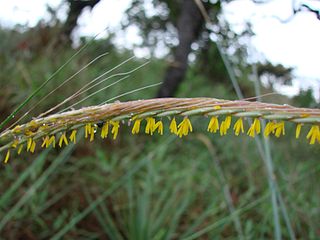
Trachypogon is a small genus of African and Latin American plants in the grass family. Crinkleawn grass is a common name for plants in this genus.

Ottochloa is a genus of African, Asian, and Australian plants in the grass family.
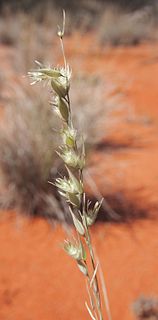
Monachather, common name mulga oats, is a genus of Australian plants in the grass family.
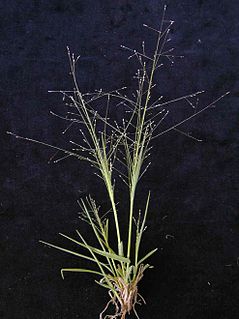
Panicum effusum, commonly known as hairy panic, is a grass native to inland Australia. It occurs in every mainland state, as well as New Guinea. In dry conditions, the fast-growing grass can become a tumbleweed.

Gahnia grandis is a tussock-forming perennial plant found in southeastern mainland Australia and Tasmania.
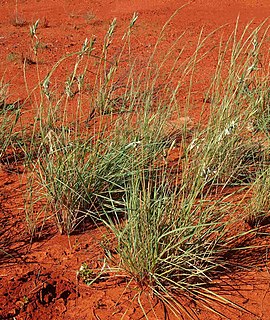
Cymbopogon bombycinus, or citronella grass is a perennial grass native to Australia.

Cymbopogon refractus, commonly known as barbed wire grass, is a perennial grass native to Australia.
The following is a list of all reported tropical cyclones within the Australian region between 90°E and 160°E in the 1960s. During the decade, tropical cyclones were named by the New Caledonia Meteorological Service, while the Australian Bureau of Meteorology started to name them during the 1963–64 season.

















